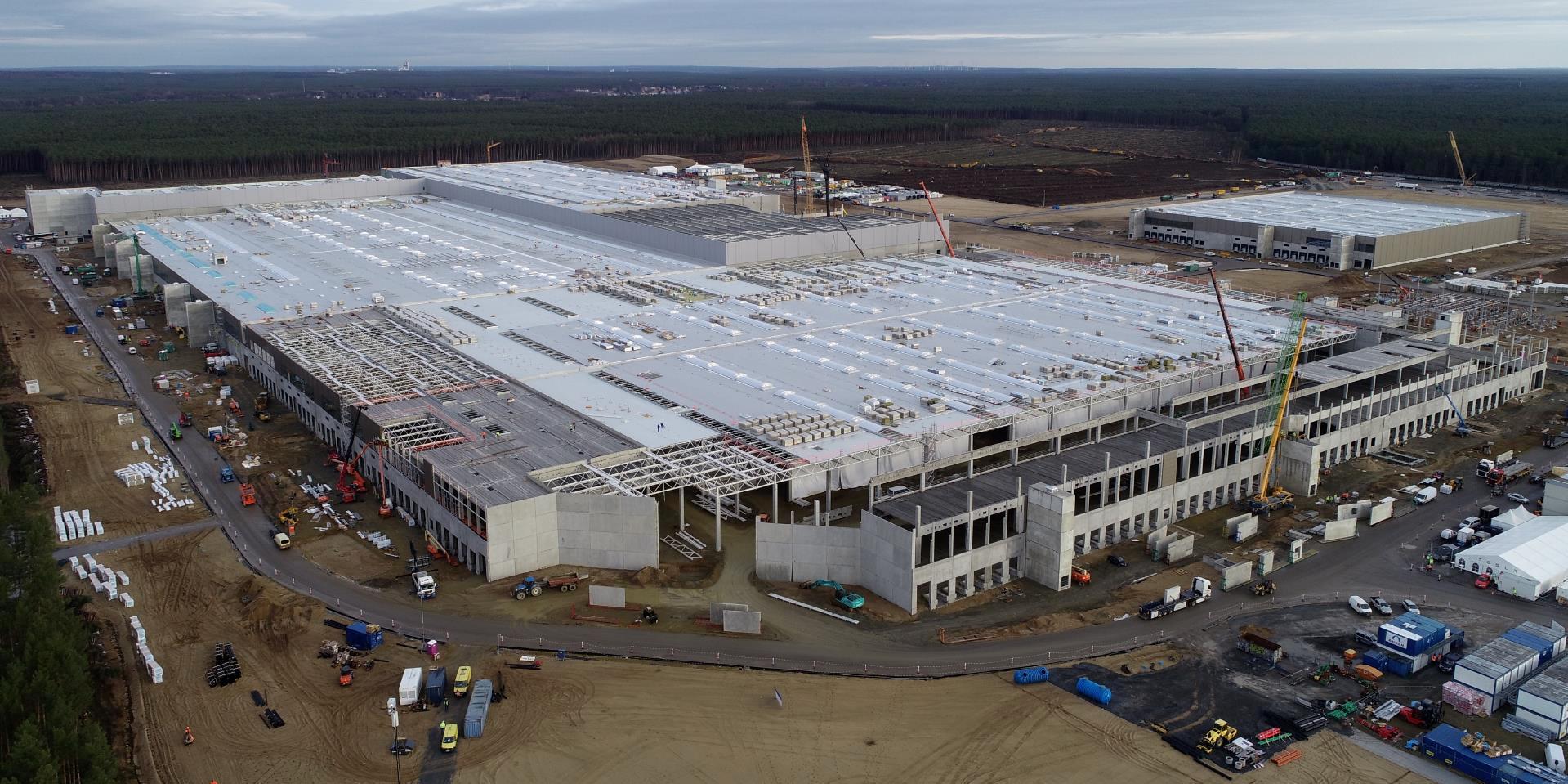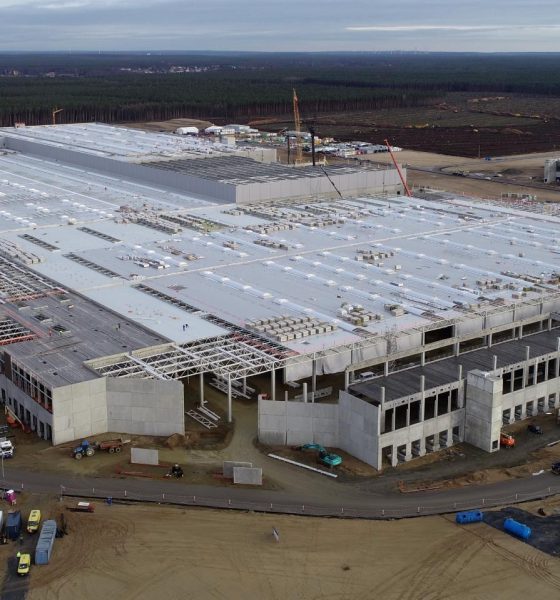Tesla is ironically facing pushback from environmental groups in Germany who claim that the automaker’s Giga Berlin production facility, which has not started manufacturing cars yet, will produce poisonous gases that will escape from the plant.
The claims are strange and ironic, especially considering Tesla is one of the most environmentally conscious companies globally, and without a doubt, the most Earth-friendly in the automotive sector.
In late 2019, Tesla CEO Elon Musk announced that the company would begin manufacturing cars in Europe, a highly popular region for EVs. Tesla has still performed relatively well even though it doesn’t have a currently active production plant there. Since then, Tesla has erected one of the most sophisticated and advanced vehicle production facilities in the world, where electric vehicle batteries, newly-engineered versions of the Model Y crossover, and a world-class paint shop will be located.
Unfortunately, despite Tesla’s production of only electric cars, environmental groups have not stopped harassing the automaker. A new report from Reuters claims that two German environmental entities have filed objections against provisional permits that the Brandenburg Environmental Authority granted to Tesla earlier this year.
Tesla has received several preliminary approvals to perform construction processes in Berlin. Anything from installing production machinery to solidifying foundations for the planned battery plant requires approval from the Brandenburg Environmental Authority. Recently, Teslarati reported that Tesla submitted an application to produce EV cells at an on-site battery factory. If approved, Tesla would be able to mass produce its cells in Germany, a move that would greatly increase the efficiency of Tesla’s supply chain, considering the first 4680 battery cells that go into Giga Berlin-manufactured vehicles will be shipped from Northern California.
However, the environmental groups, who have been identified as NABU and Gruene Liga, are pushing back against Tesla’s approval.
The groups are upset about the production of the batteries (via Reuters):
“The objection is based on the claim that Tesla has not sufficiently clarified what precautions it will take to prevent highly poisonous gas from escaping from the factory, the objection document showed.”
In the past, Tesla has brushed up with environmental groups in Berlin who have voiced various concerns regarding the electric car plant’s impact. One group, early on in the Giga Berlin construction project, said that it was concerned about the water usage at the plant, and whether contamination of the groundwater would occur. Recent projections indicate that Tesla will use significantly less water than previously estimated.
For now, there is no new word on how far the environmental group’s appeal will go, but they plan to go to court if state authorities fail to file for a permit suspension by June 16th.
Tesla has saved over 17.5 million tons of CO2 from entering the Earth’s atmosphere through its vehicles alone. However, the envrionmental groups still ignore this fact, steadily thinking about the emissions that are produced from manufacturing cars. There are emissions involved in the production of Tesla’s vehicles. Still, after a customer takes delivery of their car, the Tesla will emit zero pollution due to its environmentally-conscious powertrain.

News
Tesla FSD fleet is nearing 7 billion total miles, including 2.5 billion city miles
As can be seen on Tesla’s official FSD webpage, vehicles equipped with the system have now navigated over 6.99 billion miles.

Tesla’s Full Self-Driving (Supervised) fleet is closing in on almost 7 billion total miles driven, as per data posted by the company on its official FSD webpage.
These figures hint at the massive scale of data fueling Tesla’s rapid FSD improvements, which have been quite notable as of late.
FSD mileage milestones
As can be seen on Tesla’s official FSD webpage, vehicles equipped with the system have now navigated over 6.99 billion miles. Tesla owner and avid FSD tester Whole Mars Catalog also shared a screenshot indicating that from the nearly 7 billion miles traveled by the FSD fleet, more than 2.5 billion miles were driven inside cities.
City miles are particularly valuable for complex urban scenarios like unprotected turns, pedestrian interactions, and traffic lights. This is also the difference-maker for FSD, as only complex solutions, such as Waymo’s self-driving taxis, operate similarly on inner-city streets. And even then, incidents such as the San Francisco blackouts have proven challenging for sensor-rich vehicles like Waymos.
Tesla’s data edge
Tesla has a number of advantages in the autonomous vehicle sector, one of which is the size of its fleet and the number of vehicles training FSD on real-world roads. Tesla’s nearly 7 billion FSD miles then allow the company to roll out updates that make its vehicles behave like they are being driven by experienced drivers, even if they are operating on their own.
So notable are Tesla’s improvements to FSD that NVIDIA Director of Robotics Jim Fan, after experiencing FSD v14, noted that the system is the first AI that passes what he described as a “Physical Turing Test.”
“Despite knowing exactly how robot learning works, I still find it magical watching the steering wheel turn by itself. First it feels surreal, next it becomes routine. Then, like the smartphone, taking it away actively hurts. This is how humanity gets rewired and glued to god-like technologies,” Fan wrote in a post on X.
News
Tesla starts showing how FSD will change lives in Europe
Local officials tested the system on narrow country roads and were impressed by FSD’s smooth, human-like driving, with some calling the service a game-changer for everyday life in areas that are far from urban centers.

Tesla has launched Europe’s first public shuttle service using Full Self-Driving (Supervised) in the rural Eifelkreis Bitburg-Prüm region of Germany, demonstrating how the technology can restore independence and mobility for people who struggle with limited transport options.
Local officials tested the system on narrow country roads and were impressed by FSD’s smooth, human-like driving, with some calling the service a game-changer for everyday life in areas that are far from urban centers.
Officials see real impact on rural residents
Arzfeld Mayor Johannes Kuhl and District Administrator Andreas Kruppert personally tested the Tesla shuttle service. This allowed them to see just how well FSD navigated winding lanes and rural roads confidently. Kruppert said, “Autonomous driving sounds like science fiction to many, but we simply see here that it works totally well in rural regions too.” Kuhl, for his part, also noted that FSD “feels like a very experienced driver.”
The pilot complements the area’s “Citizen Bus” program, which provides on-demand rides for elderly residents who can no longer drive themselves. Tesla Europe shared a video of a demonstration of the service, highlighting how FSD gives people their freedom back, even in places where public transport is not as prevalent.
What the Ministry for Economic Affairs and Transport says
Rhineland-Palatinate’s Minister Daniela Schmitt supported the project, praising the collaboration that made this “first of its kind in Europe” possible. As per the ministry, the rural rollout for the service shows FSD’s potential beyond major cities, and it delivers tangible benefits like grocery runs, doctor visits, and social connections for isolated residents.
“Reliable and flexible mobility is especially vital in rural areas. With the launch of a shuttle service using self-driving vehicles (FSD supervised) by Tesla in the Eifelkreis Bitburg-Prüm, an innovative pilot project is now getting underway that complements local community bus services. It is the first project of its kind in Europe.
“The result is a real gain for rural mobility: greater accessibility, more flexibility and tangible benefits for everyday life. A strong signal for innovation, cooperation and future-oriented mobility beyond urban centers,” the ministry wrote in a LinkedIn post.
News
Tesla China quietly posts Robotaxi-related job listing
Tesla China is currently seeking a Low Voltage Electrical Engineer to work on circuit board design for the company’s autonomous vehicles.

Tesla has posted a new job listing in Shanghai explicitly tied to its Robotaxi program, fueling speculation that the company is preparing to launch its dedicated autonomous ride-hailing service in China.
As noted in the listing, Tesla China is currently seeking a Low Voltage Electrical Engineer to work on circuit board design for the company’s autonomous vehicles.
Robotaxi-specific role
The listing, which was shared on social media platform X by industry watcher @tslaming, suggested that Tesla China is looking to fill the role urgently. The job listing itself specifically mentions that the person hired for the role will be working on the Low Voltage Hardware team, which would design the circuit boards that would serve as the nervous system of the Robotaxi.
Key tasks for the role, as indicated in the job listing, include collaboration with PCB layout, firmware, mechanical, program management, and validation teams, among other responsibilities. The role is based in Shanghai.
China Robotaxi launch
China represents a massive potential market for robotaxis, with its dense urban centers and supportive policies in select cities. Tesla has limited permission to roll out FSD in the country, though despite this, its vehicles have been hailed as among the best in the market when it comes to autonomous features. So far, at least, it appears that China supports Tesla’s FSD and Robotaxi rollout.
This was hinted at in November, when Tesla brought the Cybercab to the 8th China International Import Expo (CIIE) in Shanghai, marking the first time that the autonomous two-seater was brought to the Asia-Pacific region. The vehicle, despite not having a release date in China, received a significant amount of interest among the event’s attendees.










